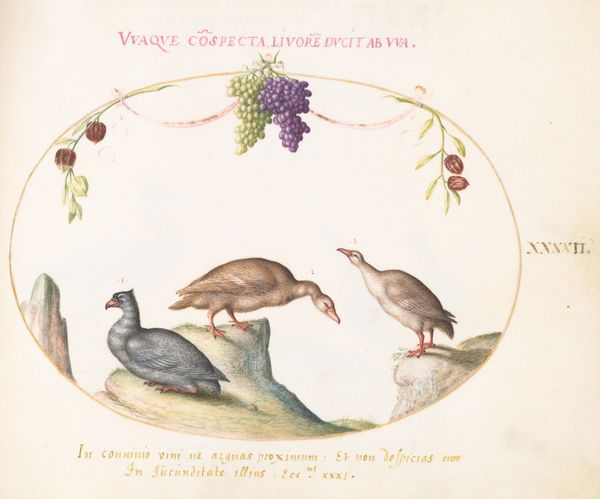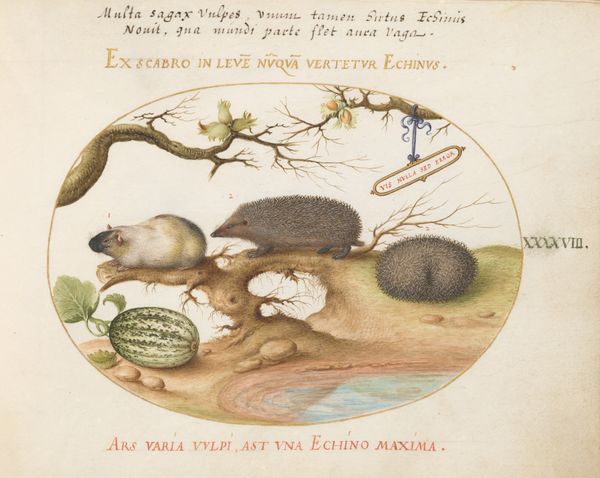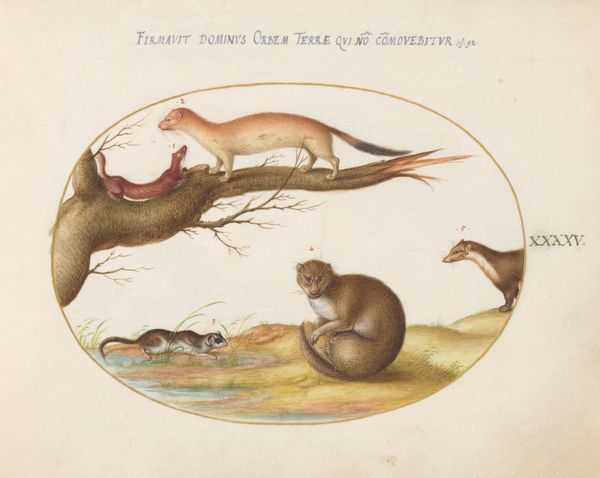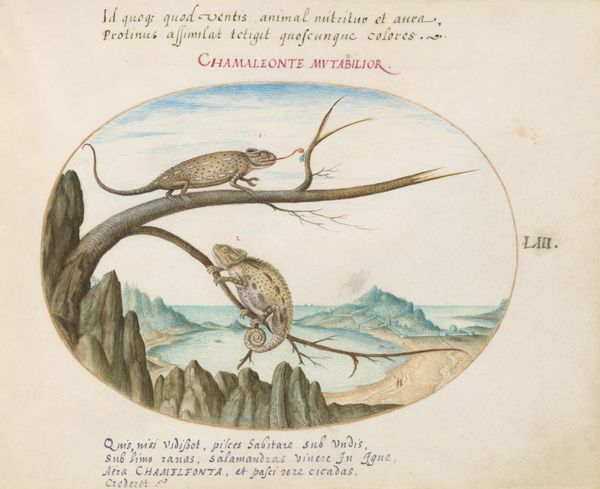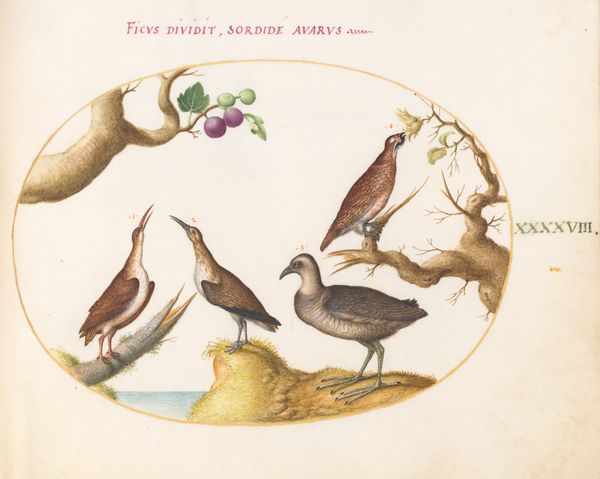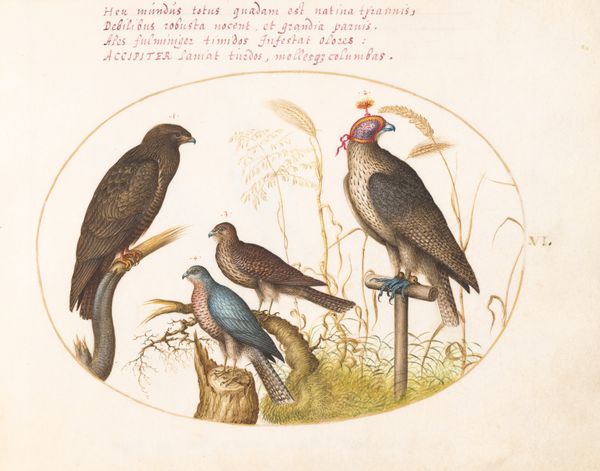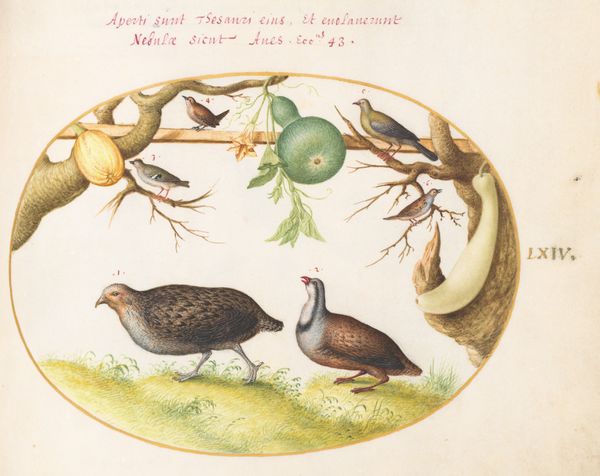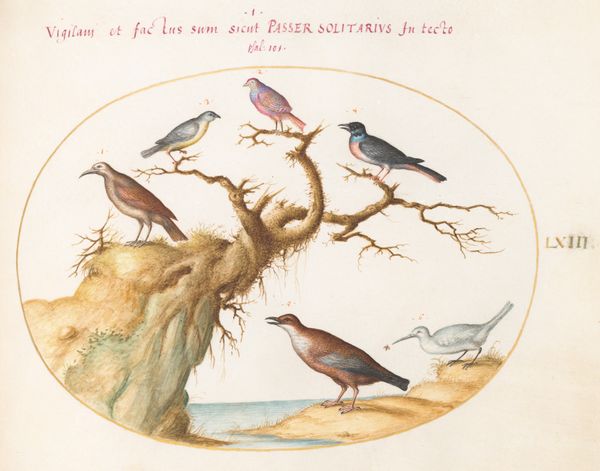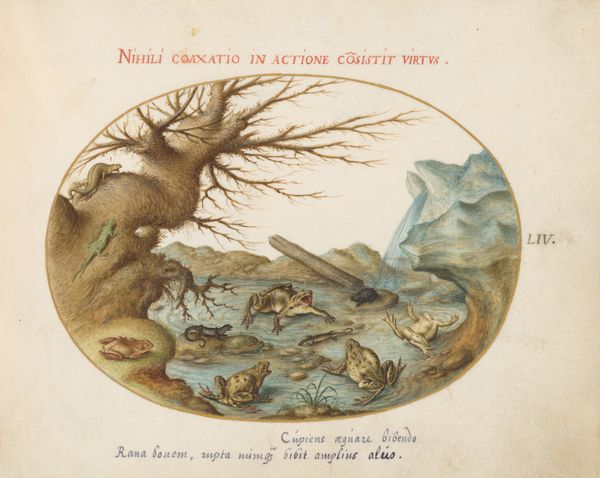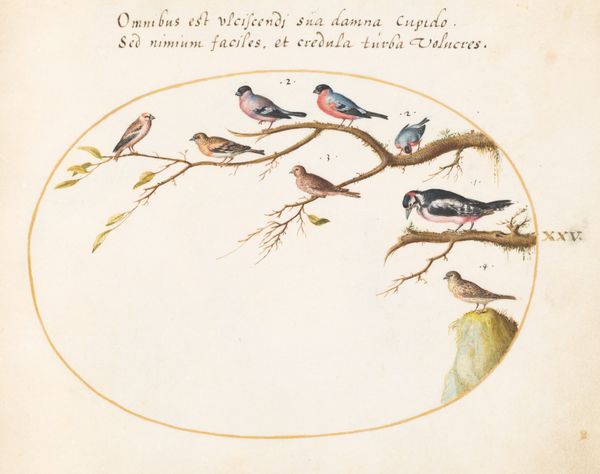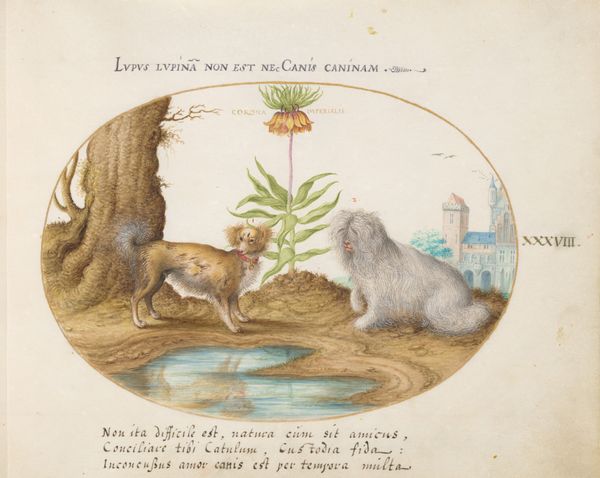
drawing, coloured-pencil, paper, watercolor
#
drawing
#
coloured-pencil
#
water colours
#
mannerism
#
figuration
#
paper
#
11_renaissance
#
watercolor
#
coloured pencil
#
watercolor
Dimensions: page size (approximate): 14.3 x 18.4 cm (5 5/8 x 7 1/4 in.)
Copyright: National Gallery of Art: CC0 1.0
Curator: Well, this is certainly... unexpected. The artist seems to have captured these mustelids in a particularly thoughtful moment, all gathered in this kind of strange oval tableau. What do you make of it? Editor: It feels a little like peering into a terrarium filled with miniature predators, a slightly unsettling tableau. What exactly are we looking at here? Curator: This piece, dating from about 1575 to 1580, is “Plate 44: Polecat, Mink, and Ermine” by Joris Hoefnagel. It's a drawing rendered in watercolour and colored pencil on paper. Hoefnagel had such a peculiar way of imbuing scientific illustration with, I don’t know, a palpable sense of life. Editor: There's definitely an unsettling tension. It's impossible not to notice the juxtaposition of the creatures' inherent wildness and the almost artificial framing. It seems deeply entrenched in Mannerism, which, given its era, implies the natural world ordered by a distinct and visible human intellect. The tension is palpable, the tiny predators almost caged, looked over, and, I cannot resist saying, objectified. Curator: Absolutely, that Mannerist tendency to distort and exaggerate natural forms is at play here. It makes you wonder what purpose they ultimately served, though, and if they were studies, intended to fit into larger projects later. Editor: And look at how they are elevated in status, given the inscriptions framing them from above and below, like some holy pronouncements. It’s as if Hoefnagel aimed to both categorize them scientifically, while also presenting them in a sort of visual poem or prayer. Curator: Maybe he just admired them! He probably recognized them for what they are, sly and beautiful. All of those little creatures are capable of survival. Editor: Perhaps. But this artistic decision to stage them so formally is striking, given how humans tend to dominate any depiction of the natural world. Perhaps, this meticulous depiction served also to justify humans taking dominion over these species. I keep thinking: who gets to name, who gets to frame, who benefits? Curator: Right. Maybe. I don’t know about all of that, but I see what you mean by seeing these creatures framed is an active decision. The Mannerists loved allegory so maybe they’re standing in for something more than we realize… It’s worth some extra consideration! Editor: Definitely worth considering from multiple angles. It seems Hoefnagel was doing more than simply drawing animals. He was participating in and reinforcing power structures that continue to impact us today.
Comments
No comments
Be the first to comment and join the conversation on the ultimate creative platform.
